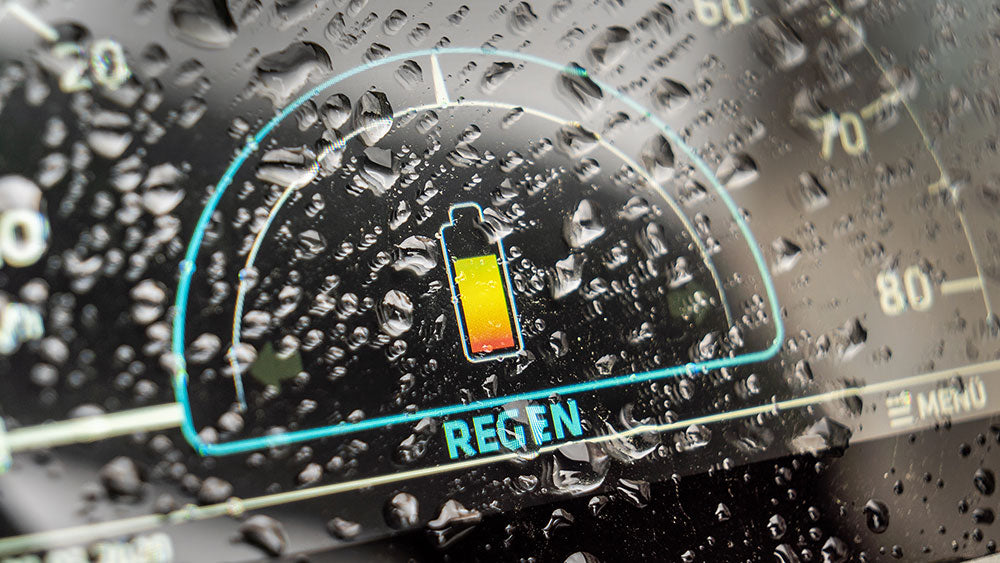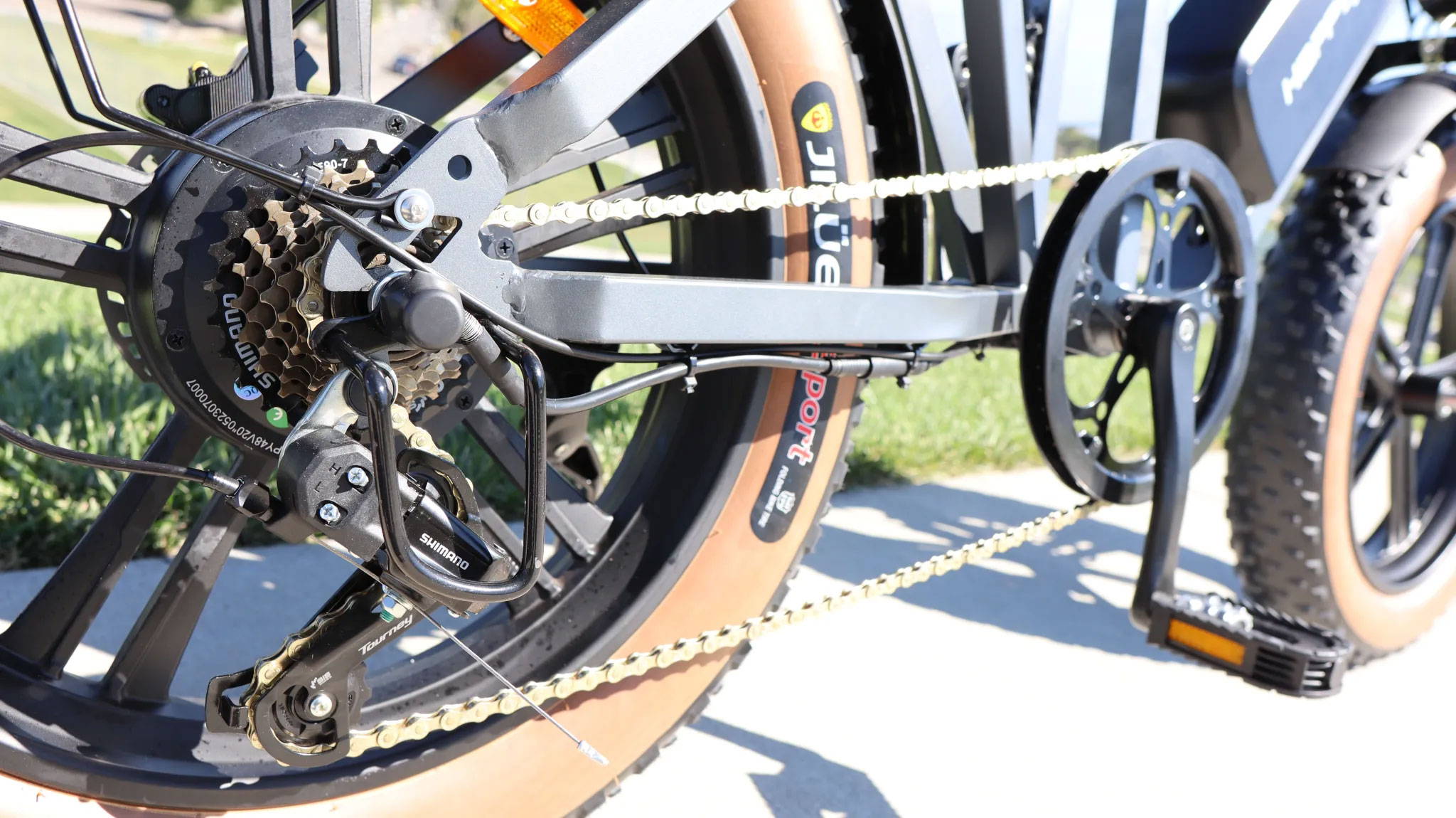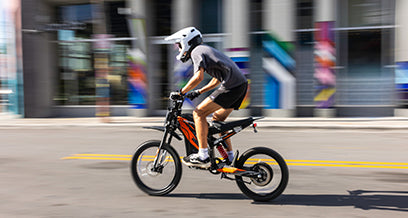
36V vs. 48V E-Bikes: Which Is Better?
When deciding between a 36V and a 48V e-bike, it’s essential to understand their key differences, particularly in terms of power, performance, range, weight, and cost. Generally, a 48V e-bike offers more power and better performance, making it suitable for varied terrains, while a 36V e-bike is often more economical for casual riding.
When it comes to choosing the perfect e-bike, one important consideration stands out: voltage. In this comprehensive guide, "36V vs. 48V E-Bikes: Which Is Better?", we'll unravel the mysteries of e-bike voltage.
We'll help you understand the differences between 36V and 48V e-bikes, explore their respective advantages and limitations, and guide you in making the right choice to match your riding style. Whether you're an experienced commuter ebike enthusiast or a newcomer to the electric revolution, let's dive into the world of e-bike voltage together.
Voltage Explained: Understanding the Differences
What Is Voltage in E-Bikes?
E-bike voltage is the heart of your electric steed's power system. It's the electrical force that drives your bike forward, and understanding it is crucial.
Voltage in pedal ebikes represents the electrical potential difference that powers the motor. It's akin to the heartbeat of your e-bike's electrical system. The voltage rating of your e-bike determines how much energy flows from the battery to the motor, directly impacting your riding experience.

HappyRun Electric Bike G60 Steed's Power System
The 36V E-Bike
36V commuter ebikes are known for their versatility and widespread use. They're often the go-to choice for many riders, but why?
36V pedal ebikes are the Swiss Army knives of the electric bike world. They're versatile, affordable, and well-suited for various riding situations. These e-bikes strike a balance between power and efficiency, making them an excellent choice for riders who value affordability and practicality.
Their components, including batteries and controllers, tend to be lighter and more compact, contributing to a more manageable and streamlined riding experience.
The 48V E-Bike
If you crave a bit more oomph and power, the 48V pedal ebike might be calling your name. Let's explore what makes them stand out.
48V e-bikes are the sports cars of the electric bike world. They offer more power, speed, and torque, making them the choice of riders who demand high performance and a thrilling riding experience.
With a 48V system, you'll enjoy faster acceleration, better climbing ability on steep hills, and the capability to tackle various terrains with ease. These e-bikes often come equipped with larger and more powerful motors, enhancing their overall performance.
What Are the Key Differences Between 36V and 48V E-Bikes?
The primary distinction between a 36V and a 48V e-bike lies in their voltage output, which directly influences performance characteristics. A 48V e-bike typically provides greater power, allowing for faster acceleration and improved torque, particularly on inclines or rough terrain. In contrast, a 36V e-bike is generally designed for more moderate riding conditions.
While voltage plays a significant role in e-bike performance, it's not the sole determining factor. Other components, such as motor power and battery capacity, also influence your riding experience.
How Does Voltage Impact Power and Performance?
Voltage significantly affects both power output and overall performance of an e-bike. A higher voltage allows the motor to draw more current from the battery, resulting in increased torque. This means that a 48V e-bike can handle steep climbs more efficiently than a 36V model. Riders seeking high performance in demanding conditions will benefit from the enhanced capabilities of a 48V system.
Matching Voltage to Your Riding Style: Making the Right Choice
Before you make your decision, it's essential to assess your riding needs and preferences. What type of riding do you primarily do, and where will you use your e-bike most?
Consider factors such as your typical terrain, the distance you plan to cover, and whether you'll use your e-bike for commuting or leisurely rides. A 36V e-bike might be ideal for city commuting with occasional trips, while a 48V e-bike may be better suited for off-road adventures and longer journeys.
Speed vs. Range
One crucial trade-off to consider is the balance between speed and range. Do you prioritize zipping through traffic, or do you need your e-bike to go the extra mile?
- Speed: If you value speed and the thrill of a brisk ride, a 48V cool electric bike can provide the necessary power to achieve higher speeds.
- Range: If you're planning longer rides or need your e-bike for daily commuting without frequent charging, a 36V pedal ebike might offer the range you desire.
Budget Considerations
Budget can play a significant role in your decision-making process. We'll discuss cost-saving strategies for both 36V and 48V e-bike options.
While 48V e-bikes tend to be pricier upfront due to their enhanced components and performance capabilities, it's essential to weigh this cost against the potential benefits and your long-term riding goals. Consider the value you place on the advantages offered by a 48V system, such as faster speeds and greater versatility, and whether these align with your budget.
Test Rides and Consultation
Sometimes, the best way to decide is to get in the saddle. Test rides can help you experience the differences firsthand.
Before making your final decision, visit local e-bike dealers or rental shops that offer both 36V and 48V e-bikes for test rides. Riding these e-bikes in various conditions, such as uphill climbs and city streets, can provide valuable insights into their performance and handling.
Additionally, consider consulting with pedal ebike experts or dealers for personalized recommendations. They can assess your riding needs, preferences, and budget to guide you toward the most suitable voltage choice.
NEW Affordable SUPER 73 Alternative Happy Run Tank G60 Review @Electric Vehicles Space - YouTube
Battery Technology
E-bike performance isn't solely determined by voltage; it's intrinsically linked to battery technology. As we journey deeper into the world of e-bike voltage, it's essential to understand how advancements in battery technology play a pivotal role in the performance of 36V and 48V e-bikes.
Battery technology is in a state of constant evolution. Newer battery chemistries, such as lithium-ion, have revolutionized the e-bike industry. These batteries offer numerous advantages, including higher energy density, longer lifespan, and reduced weight compared to older battery types.
When it comes to voltage, lithium-ion batteries have the ability to provide more power while remaining compact and lightweight. This is particularly beneficial for 48V e-bikes, as they can harness the advantages of higher voltage without drastically increasing the weight or size of the battery pack.
Moreover, lithium-ion batteries are known for their energy efficiency, which translates to longer rides on a single charge. This is a significant consideration when evaluating the overall performance of 36V and 48V e-bikes.
Charging and Range Considerations
Understanding how voltage impacts charging times and range is pivotal in making an informed choice between 36V and 48V e-bikes. Let's explore these critical considerations.
One aspect to keep in mind is that higher-voltage cool electric bikes often require more time to charge compared to their lower-voltage counterparts. This is primarily due to the larger capacity of the battery, which means it holds more energy but takes longer to replenish fully.
On the flip side, the extended range offered by higher voltage e-bikes can be a game-changer, especially for riders who crave long journeys. With a 48V system, you can venture further into the unknown, exploring more distant destinations without the anxiety of running out of power.
What Are the Range Differences Between 36V and 48V E-Bikes?
While both battery systems can deliver impressive ranges, the actual distance covered depends on various factors including battery capacity (measured in amp-hours) and riding conditions. Generally, a fully charged 48V battery can provide slightly less range than its 36V counterpart when both are of similar capacity because higher voltage systems consume more energy under load. However, the increased power may offset this in practical use.Diagram: Range Comparison Based on Battery Capacity
Maximizing Range
To make the most of your e-bike's range, consider factors such as riding at moderate speeds, maintaining proper tire pressure, and optimizing your pedal-assist level. These adjustments can help you conserve energy and enjoy longer rides between charges.
Maintenance and Longevity
The choice between 36V and 48V e-bikes also has implications for maintenance and the longevity of your ride. Let's delve into these aspects.
Higher voltage systems, such as 48V e-bikes, can place more stress on certain components, including the motor and controller. This increased power output may lead to more frequent maintenance requirements. It's essential to regularly inspect and service these components to ensure they remain in optimal condition.
Maintenance Tips for 36V and 48V E-Bikes:
- Keep an eye on your chain, sprockets, and brakes, as these components can wear out more quickly with increased power.
- Clean and lubricate your drivetrain regularly to prevent premature wear and ensure smooth operation.
- Pay attention to your battery's health by storing it in a cool, dry place when not in use and avoiding extreme temperature fluctuations.
- Consider professional servicing at recommended intervals to address specific maintenance needs associated with your e-bike's voltage.
By taking these maintenance precautions and understanding the influence of battery technology on e-bike performance, you'll be better equipped to enjoy the full benefits of your chosen voltage while prolonging the longevity of your electric companion.
How Do Weight and Size Affect E-Bike Choices?
Weight is another critical factor when comparing these two types of e-bikes. Typically, 48V batteries are heavier than 36V batteries due to their larger size and additional components needed to handle higher voltage systems. This added weight can influence handling characteristics, making 36V bikes easier to maneuver for casual riders or those who need to carry their bike frequently.
What Are the Cost Implications of Choosing 36V vs. 48V?
Cost is often a decisive factor when selecting between 36V and 48V e-bikes. Generally, 36V models are less expensive due to lower production costs associated with simpler components. However, investing in a 48V bike may be worthwhile for riders who prioritize performance, as they tend to offer better acceleration and handling on challenging terrain.
Buying Tips for Selecting Between 36V and 48V E-Bikes
When deciding on an e-bike:
- Assess Your Riding Needs: If you plan to ride primarily in urban areas or on flat terrain, a 36V bike may suffice.
- Consider Terrain: For hilly or off-road conditions, opt for a 48V model for better performance.
- Test Ride Options: Always test ride different models to find one that feels comfortable based on your specific needs.
- Research Brands: Look into reliable brands like HappyRun, known for their quality e-bikes with robust designs suitable for various riding styles.
E-Bike Expert Views
“E-bikes have transformed how we think about commuting,” says cycling expert Jane Smith. “Choosing between a 36V or 48V system should depend on your specific needs—whether you prioritize range or power.” She emphasizes that understanding your riding environment will guide you toward the best choice.
Final Words
In the dynamic world of e-bikes, the voltage you choose can greatly impact your riding experience. We've explored the distinctions between 36V and 48V e-bikes, weighed their pros and cons, and provided guidance on matching your choice to your riding style.
Looking for the best pedal ebikes with 48V batteries? HappyRun has your back!
The right voltage can transform your e-bike into the perfect companion for your adventures. Whether you opt for the versatility of a 36V system or crave the power of a 48V beast, rest assured that your e-bike journey is bound to be electrifying. So, which voltage will you choose? The answer is as unique as your ride ahead.
































Leave a comment